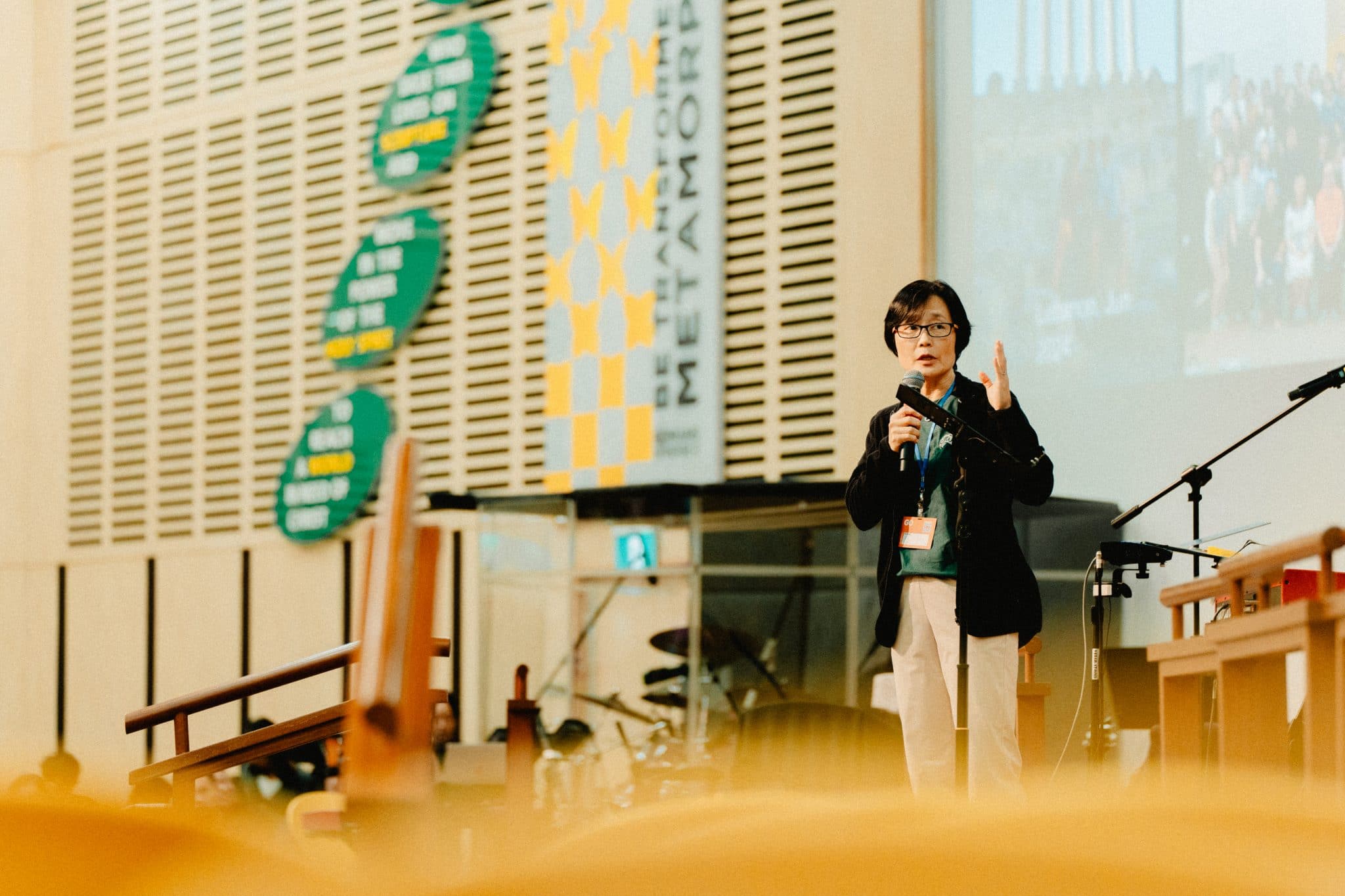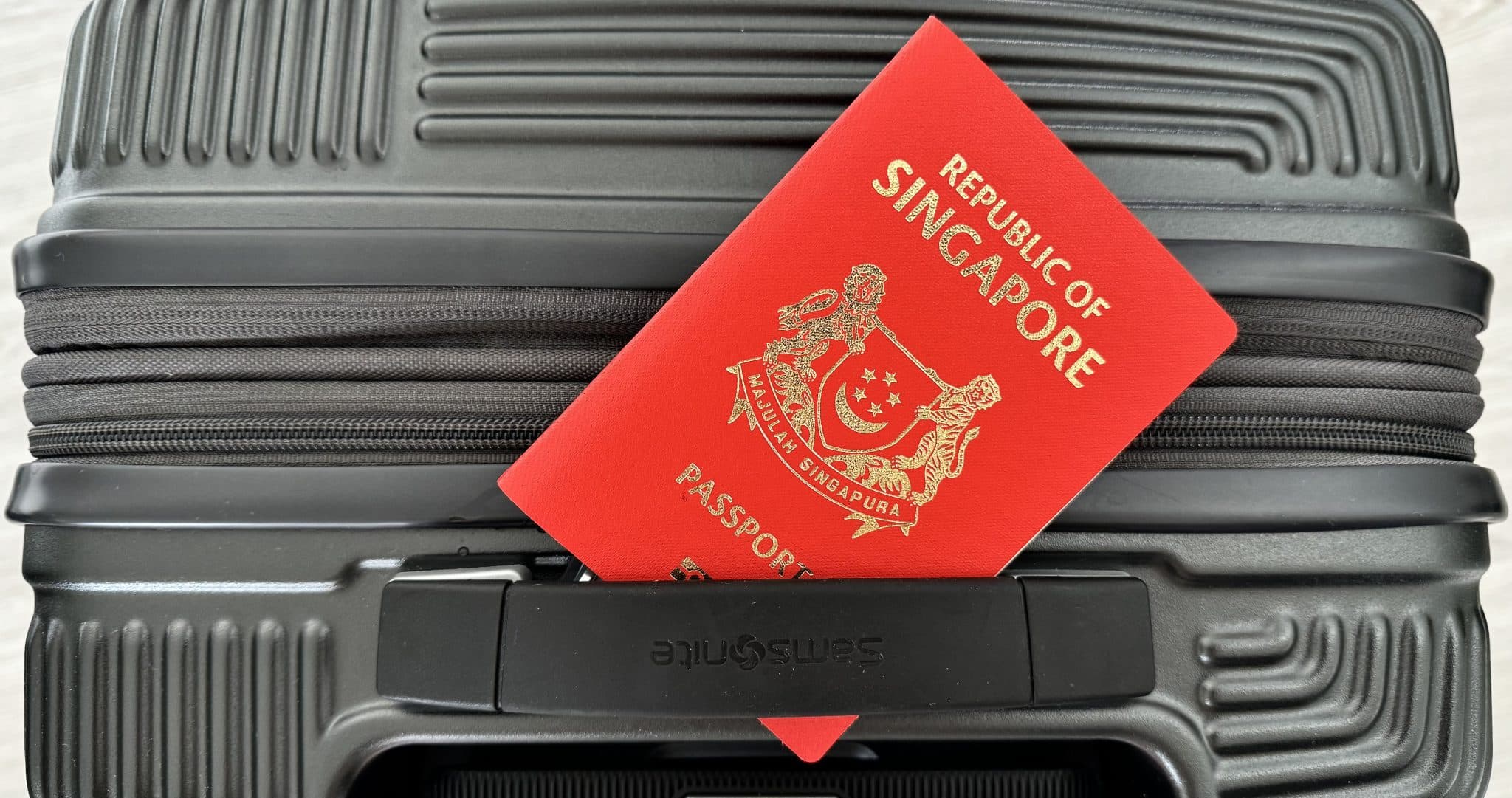The new frontier: Going on a digital mission trip
by Janice Tai // May 19, 2021, 11:21 pm
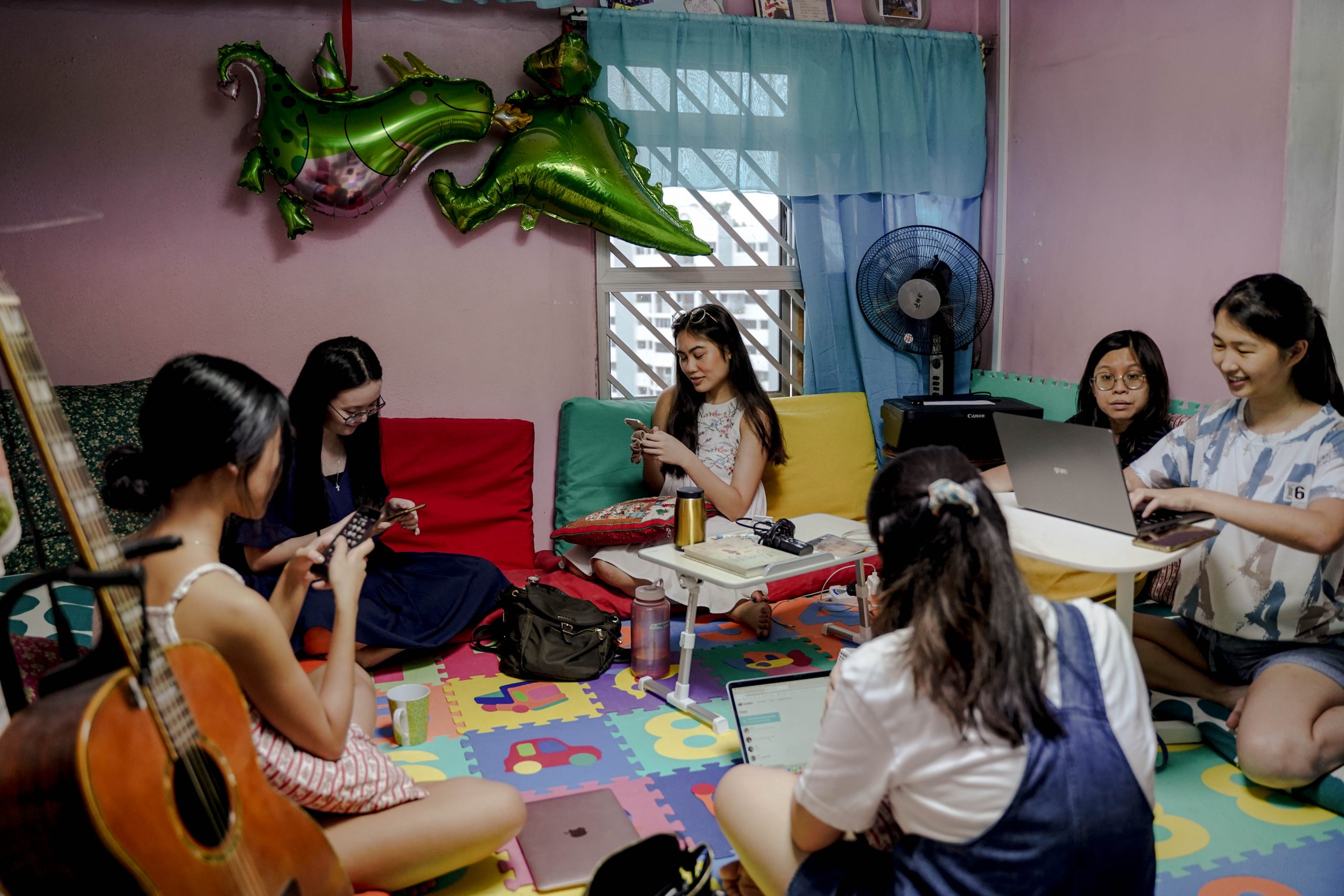
Students embarking on a digital mission trip, where they go online to befriend people from other Asian countries. (This photo was taken in Phase 3 when eight persons were allowed in a group.) Photos courtesy of Joeyee and Yvonne.
It was February 2020 and Joeyee* had her luggage packed, ready to spend the next one-and-a-half years in Thailand doing mission work.
Her flight ticket was bought and she had said her goodbyes to her grandma, the one person she had much difficulty parting with.
Then the fateful text message came from the leadership of Cru Singapore: All mission trips were delayed in view of the new coronavirus emerging in the world.
Joeyee’s heart sank.
Ever since she went on her first mission trip to Malacca at the age of 18, she knew she would one day return to her first love – reaching those who had not yet heard the Gospel.
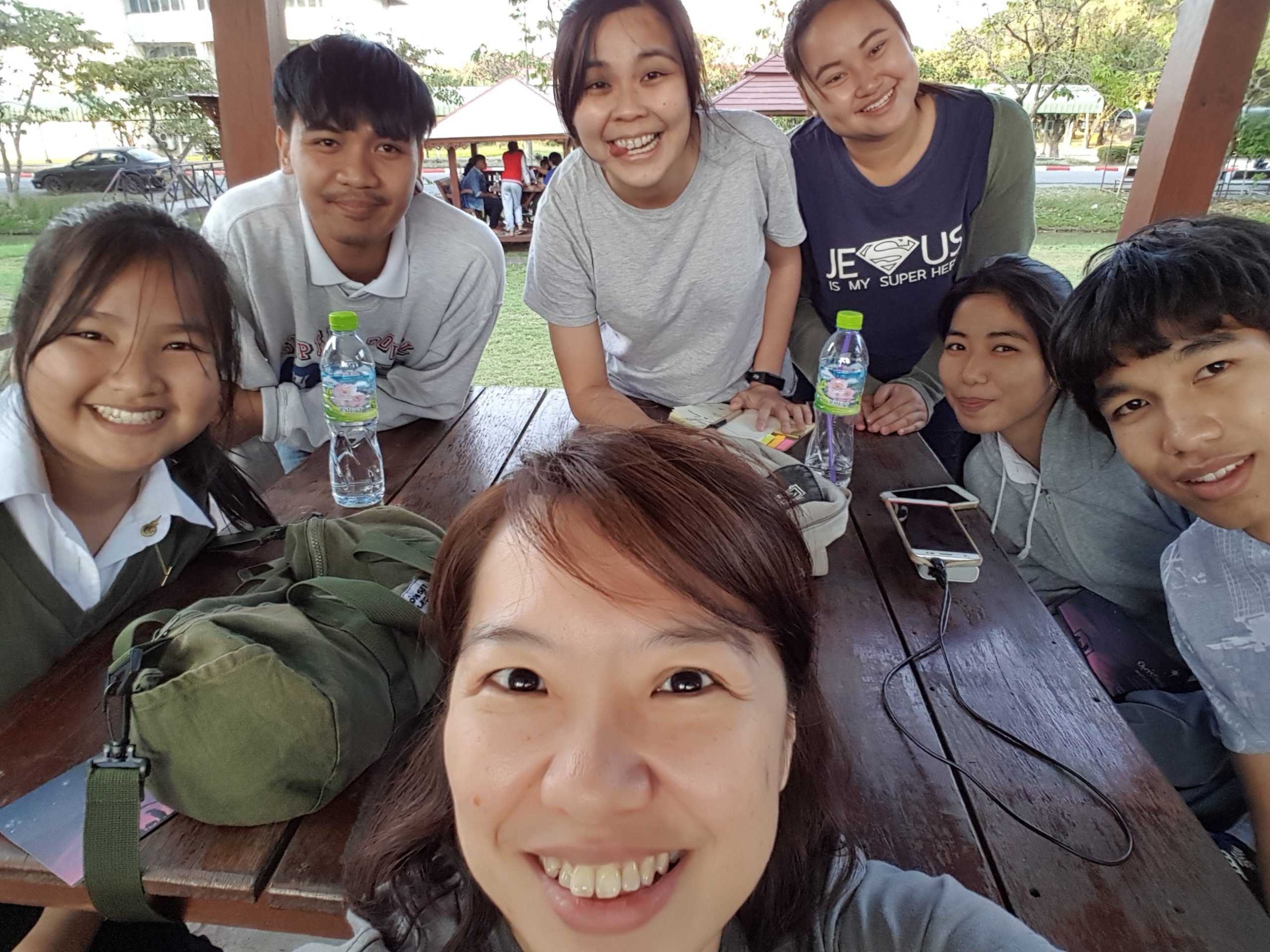
Joeyee (standing in grey, centre) with her Thai friends on an earlier ministry trip.
By the time she hit 30, her heart was ready to follow God’s leading into the mission field.
Then, an invisible virus appeared and upended lives around the world, including hers.
“I was disappointed and confused. I didn’t know why God led me to prepare to leave for Thailand and then I couldn’t go,” said Joeyee.
“Of course, I knew the leadership had made a very wise decision for our health and safety. It’s okay because God is sovereign,” she added.
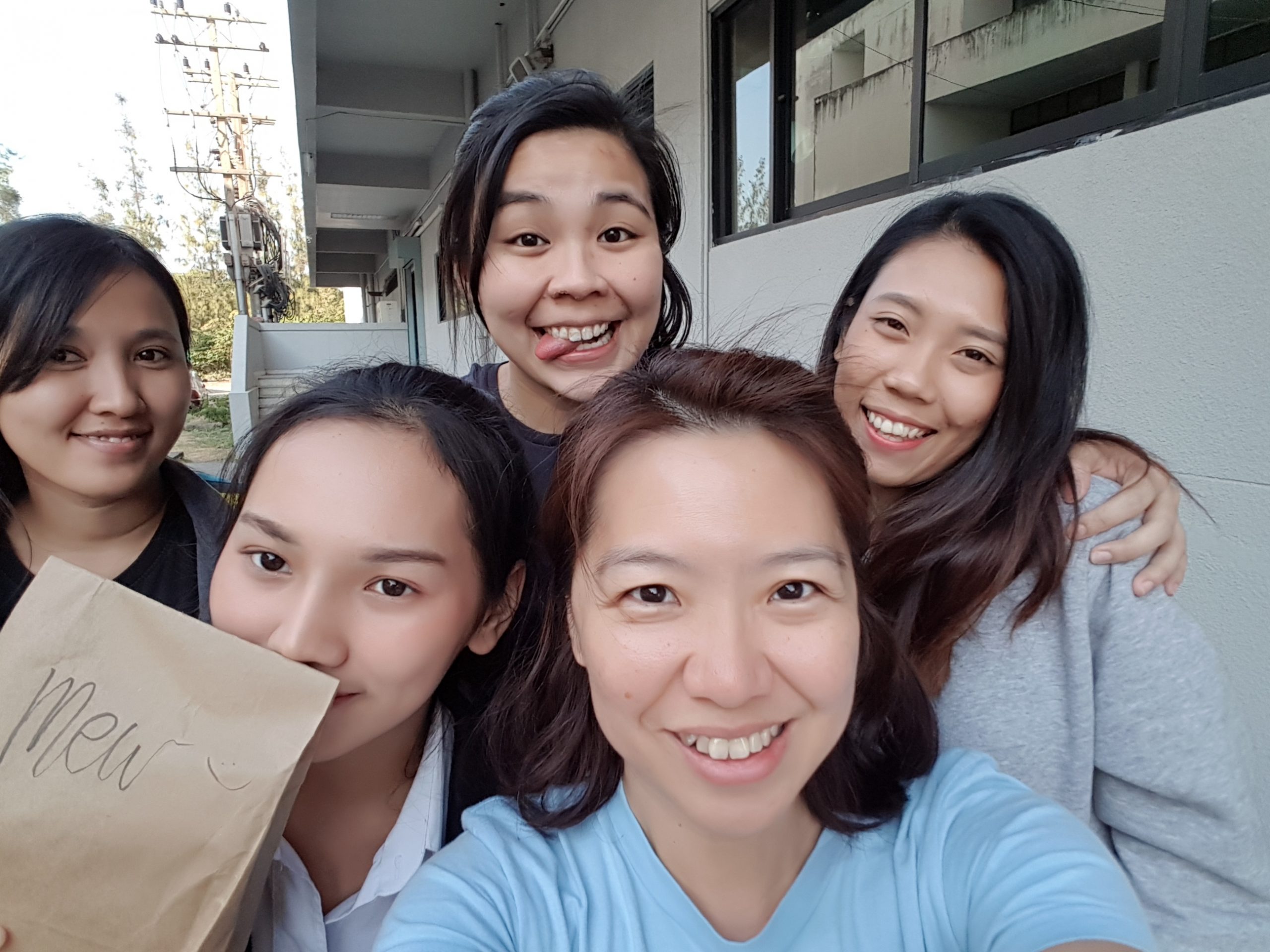
Joeyee (centre) had her heart set on following God’s leading into a mission field when Covid put a stop to her plans.
Indeed, God had other plans for Joeyee and some of her teammates at Cru Singapore. They went on to experiment with different models of digital outreach and eventually pioneered their own guide on how to go about doing a “digital mission trip”.
It was such a success that more than 10 churches and organisations have approached them to find out how to join in or facilitate digital mission trips in a world still wrecked by the ongoing Covid-19 pandemic.
Back in February last year, Joeyee assumed that perhaps she would leave for Thailand the following month.
The next month came, and Singapore had its first Circuit Breaker instead.
Joeyee did not wallow in despondency or self-pity last year.
She had no time to do so.
Uncharted territory
Shortly after unpacking her luggage, Joeyee was contacted by Yvonne* who coordinates Cru Singapore’s working adult mission trips.
It turned out that Cru’s campus ministry strategy head, Leong Wai Ling, had been praying for a solution for student mission trips that had been stalled during the pandemic.
As she prayed, she remembered an idea about digital outreach that someone had shared with her. She approached Lillian Seow, Cru’s head of digital strategies, to see if they could explore this novel idea. Joeyee and Yvonne from the missions team were roped into the effort.
Will there be enough depth in an online interaction to bring to Christ those we have not met face-to-face?
The two young women had a seemingly inconceivable task before them: To come up with some semblance of a “digital mission trip”, so that campus students can continue cross-cultural missions even with the cessation of international travel.
But the concept of digital evangelism was difficult to fathom.
How can we meet new contacts and build relationships purely through online means? Will there be enough depth in an online interaction to bring to Christ those we have not met face-to-face?
It was uncharted territory. But the two were unfazed by the challenge.
There’s no harm in giving this a shot, they thought, as the pandemic may stretch on to the unforeseeable future.
Besides, this new approach may be useful for countries which are difficult to access for various reasons, even when borders open in future. Students who are too busy to go overseas for trips may also benefit.
Joeyee and Yvonne decided to name the initiative REDproject, with RED standing for Reaching Everyone Digitally.
They emailed potential ministry partners in other countries, inviting them to join in the experiment. However, rejections were plenty as most partners could not see how it could work out.
“Nobody knew what we were talking about and they couldn’t imagine what a digital mission trip looked like.”
Some of them were a one-man show in their own countries who did not have the capacity and bandwidth to try something new. Others were in countries that had no Covid-19 travel bans so they misunderstood and thought that the Singapore team wanted to go over for missions.
“Nobody knew what we were talking about and they couldn’t imagine what a digital mission trip looked like,” said Yvonne.
Fortunately, two of their overseas partners in East and West Asia decided to take the plunge and join in.
By the second week of April last year, Yvonne and Joeyee roped in their fellow Cru colleagues to participate in the pilot run of two digital mission trips to East and West Asia.
It was a whole new terrain to explore and things got tricky at times.
One ministry partner who was giving them ideas on useful social mobile applications for connecting with people in the country suddenly disappeared from the messaging platform, presumably because of security issues.
Another partner promised to introduce contacts to them but the pilot run had started just as their staff were trying to travel and resettle back home after navigating the Covid-19 travel restrictions. They had neither time nor space to think about linking up people for a digital mission trip.
Though some of the Cru staff were on standby on a digital mission trip, there was no one to reach out to.
But Yvonne and Joeyee did not lose heart.
They hunkered down and brainstormed new ideas, eventually mapping out the details and programme of what the two teams could do during their digital mission trips.
The teams would meet online or offline (depending on the Covid-19 restrictions in the country at that moment in time) for activities usually done in a physical mission trip: Prayer, worship and devotion. They would also be trained on how to do cross-cultural missions before they broke off with their team mates to plan team bonding sessions and outreach strategies.
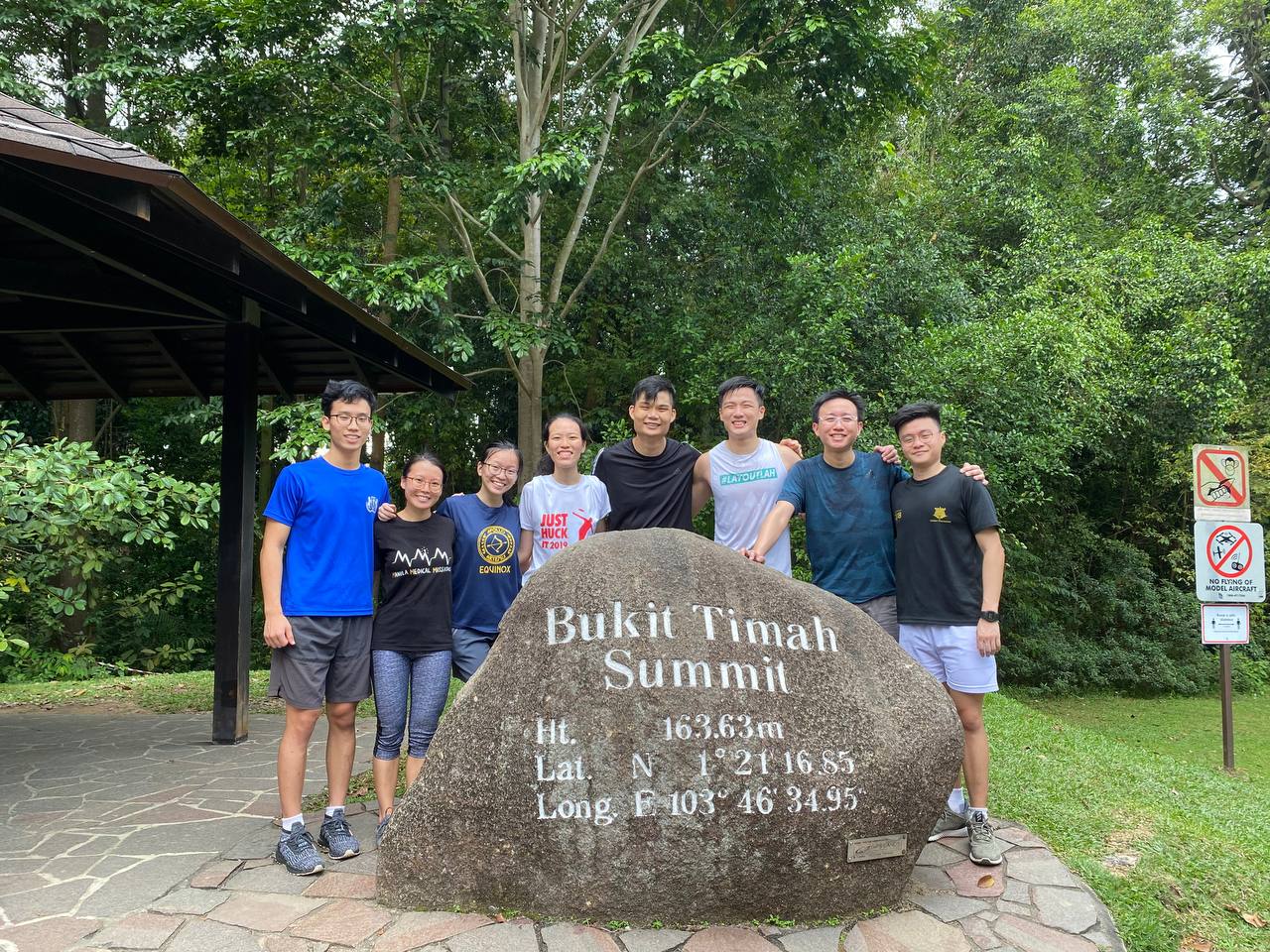
A cell group from Covenant Evangelical Free Church enjoying their team bonding and outdoor time during their digital mission trip during Phase 3 when groups of eight were allowed.
The mission trip would last five days and be aligned to the time difference of the country they were reaching out to. For example, the West Asia team found that the locals were most active online at about 1 to 2am Singapore time, so they would start their day later and end later so as to be able to interact with the West Asian locals online.
The modus operandi for the two teams also differed as each team was open to trying out different ideas.
The East Asia team befriended people in that country on social and language learning apps.
They learnt that many were keen to connect with foreigners to learn how to speak English. Sometimes, the casual and social conversations would go deeper and take on a spiritual bent, and that was when the team members would invite their newfound friends to chat with them further on a messaging platform.
Locals who were keen to converse with them regularly in English would sign up for the team’s weekly English Corner sessions which were held on Zoom.
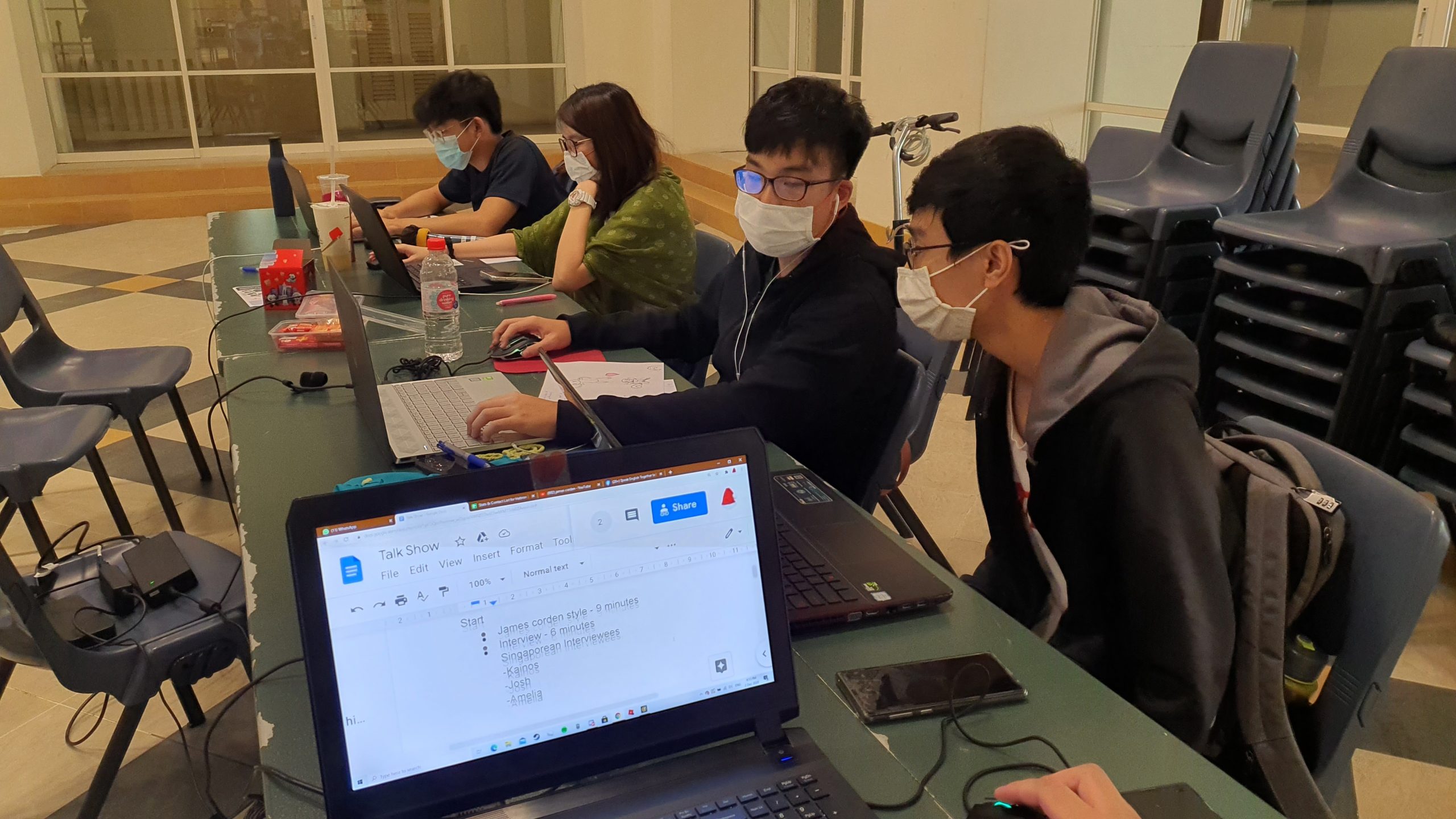
Digital mission trippers from Hebron Bible-Presbyterian Church.
The West Asia team used Facebook to reach out. Cru had placed a pre-evangelistic video on the social media site which could be downloaded in specific countries across age groups. After viewing the video, viewers who wished to know more about the Christian faith could leave messages. The mission trippers would follow up on the messages and continue having conversations with the West Asia locals.
Altogether 24 teams of 176 digital missionaries were sent to Thailand, Mongolia, Japan and Myanmar, besides East and West Asia.
Using digital platforms opened new doors for evangelism. But there were also challenges along the way.
It was not easy for the West Asia team to stay up till the wee hours of the morning to chat with people they hardly knew online. Yet they tried their best as they found that they were meeting people online who were hungry for connection or feeling lost in a changing world. The people there were even using google translate to communicate with them, yet the language barrier was still a significant challenge.
Then, there was the time when Zoom dining (eating in front of your computer with a group of online friends) was trending in Singapore. The team invited their East Asian contacts to join them for a Zoom dining-cum-English learning experience that was themed “Eat Your Own Words”. Sadly, only four people turned up.
Later on, the team found out the reason behind the dismal attendance.
“We learnt that it is considered rude to eat in front of the computer in their communal culture, so that wasn’t culturally acceptable,” said Yvonne.
Currently, there are three weekly English Corners – for Mongolia, Thailand and East Asia – happening on Zoom every week.
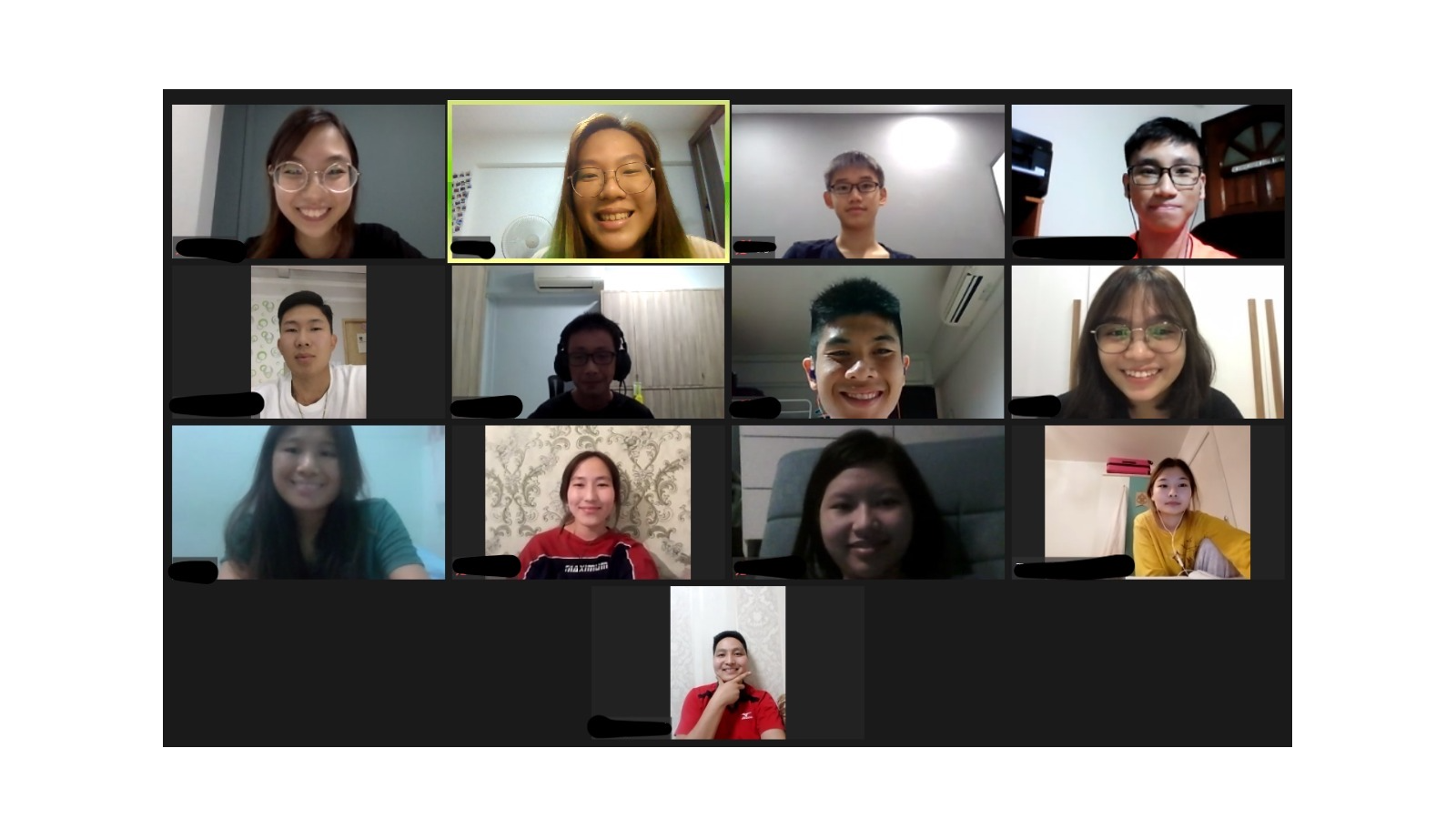
Polytechnic students organised English Corner sessions for Mongolian students while on their digital trip.
Despite these hiccups from the pilot runs, the team went from strength to strength to send out 24 teams of 176 digital missionaries to Thailand, Mongolia, Japan and Myanmar, besides East and West Asia.
Each team size ranged from four to 15 people. They were mostly made up of campus students, though some churches and Bible schools also formed and sent their own teams.
To date, these teams have reached out to thousands of people online in the region. In total, there were about 110,000 exposures to the content shared, with another 2,800 people who eventually were connected to the mission trippers or Cru team during the trip.
The Gospel was shared over 200 times and 14 people from various countries even came to accept Jesus as their Saviour via such online touchpoints.
One of them was a young woman from Thailand whom a team member befriended on a language mobile app. She later joined in for the weekly English Corner Zoom session.
The Gospel was shared over 200 times and 14 people from various countries even came to accept Jesus as their Saviour.
Late last year when Christmas was round the corner, the Zoom group shared some spiritual conversations revolving around Christmas. The Thai did not know much about Christianity, nor was she interested in finding out more about the faith.
However, over time, she found the team members really nice and helpful. As a result, she accepted an invitation to attend an evangelistic Bible study and she received Christ during one of the Bible study sessions.
“For the people from the Zoom English learning sessions who are interested in finding out more about the faith, we talk to them on a separate messaging platform. They get to ask questions and we have productive conversations, such as discussing how reliable the Bible is and sharing our own personal stories,” said Yvonne.
Apart from doing digital outreach via mobile applications, social media sites and Zoom sessions, each digital mission trip can also be customised to the needs of the specific country, said Joeyee. For instance, holding cultural exchange talks or other webinars can be done.
Global impact
Similar to the benefits of work-from-home arrangements, there are many plus points in having digital mission trips.
Most of the trips are held from Monday to Friday, freeing up the participants’ time for weekend commitments.
“Previously, we may need hours or days to travel to villages or to the university campus from the overseas hotel. Now we can reach more people in a shorter amount of time,” said Yvonne.
Joeyee said it was fruitful for her to make new friends from Thailand online first as she looks forward to meeting them in person when she eventually heads to the country.
“In the online space, some people may also feel safer about having deeper conversations. One girl shared with me about the abortion that she went through. But we must also know how to ask good questions and that can be trained,” said Joeyee.
Such digital mission trips may also be the way to go in a world which is seeing stricter visa restrictions and more security concerns in countries which are harder to access.
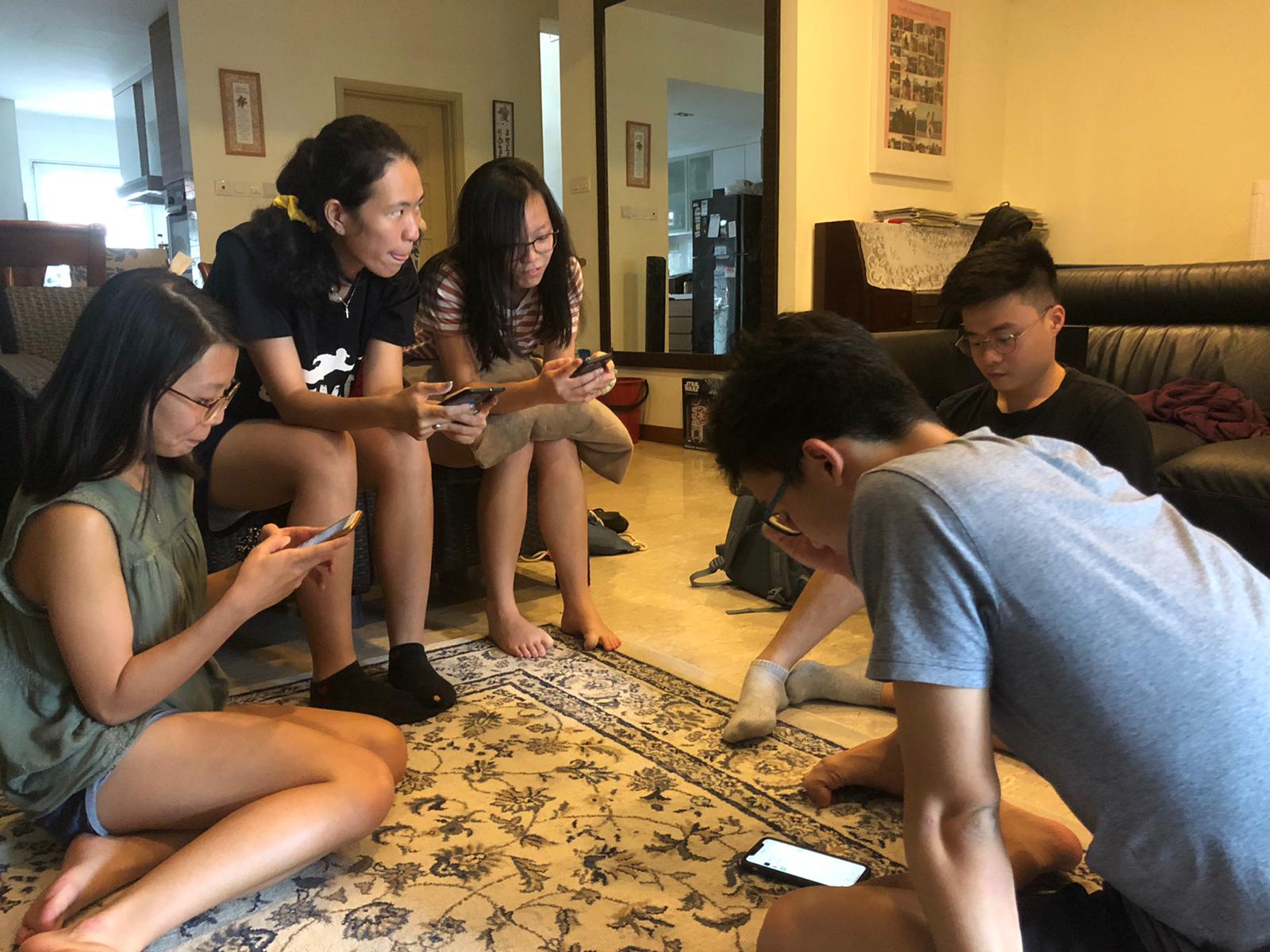
A cell group on a REDproject trip.
It is a fallacy that online conversations cannot achieve the connection needed for fruitful relationships.
“There was once I couldn’t make it to an English Corner session due to personal reasons. One of the friends there remembered my birthday and sang me a birthday song,” said Yvonne.
“On another occasion, a student who went on a digital mission trip recognised and acknowledged me in a mall even though I was wearing my mask then and I had not met her before in real life,” said Yvonne.
Final year Food Science and Technology student at the National University of Singapore, Amelia Chng, 22, went on three digital mission trips to East Asia and West Asia last year.
“Life can sometimes be very lonely and even an Internet pal can make a huge difference to our lives.”
“During the trip, we had an itinerary planned and so we would have devotionals, meals and group bonding activities together. We also had stipulated time periods when we would communicate with our new friends and help each other if we get stuck in conversations or experienced language barriers,” said Chng, who joined the mission trips out of a desire to learn more about a new culture and people group.
She also wanted to make full use of her holidays to reach out to new friends beyond Singapore during such difficult times.
Chng said going on a digital mission trip dismantled her “rigid” understanding of evangelism and mission trips.
“Wherever we are in the world, we can do missions now with the internet and social networking platforms connecting nations together. The trip also opened my eyes to how many people were out there – broken, hurting, and facing similar life situations – as I do. Life can sometimes be very lonely and even an Internet pal can make a huge difference to our lives. Just like any friendship, cultivating relationships take time, patience and authenticity,” she added.
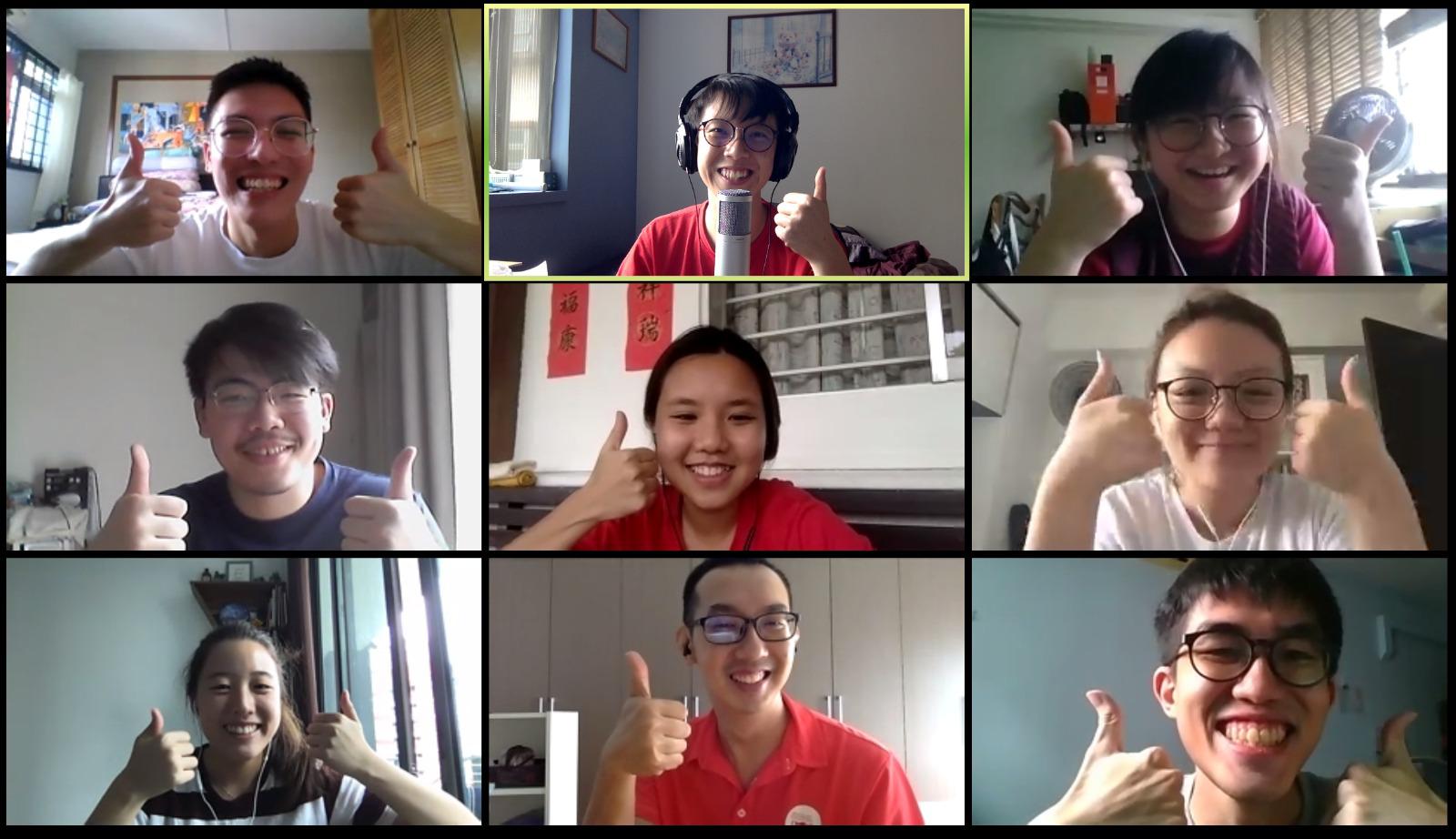
Amelia (in white shirt) celebrating the end of their digital mission trip with her fellow digital missionaries.
Undeniably, using the online medium for missions has its drawbacks too.
One difficulty is following up with the new friends who have just accepted Christ. They needed a community for growth in their discipleship journey.
“Usually, we would take them to church, but that is not possible now,” said Yvonne. “So we try to link them up with our ministry partners overseas but that is less than ideal as the friends have already developed a relationship with us and not the ministry partner.
“So, we try to connect them as early as possible to build up the relationship.”
“God’s hand is certainly on this, in opening up the way for us and helping us think out of the box.”
Another challenge that digital missionaries faced was carving out the space and time needed to focus on the “trip”.
“Sometimes their parents or siblings don’t understand that they are on a ‘mission trip’ as they see them physically at home. So, they get called on to do household chores or have a myriad of distractions around them,” said Joeyee. That is why the digital mission trippers are encouraged to meet up physically in the day (if Covid-19 restrictions allow for it) to help each other stay on track.
Zoom fatigue has also been a huge challenge.
“During the Circuit Breaker last year, my friends were busy posting photos of their baked goods or bubble tea on social media but I was busy managing multiple conversations with my new friends online. It can get overwhelming and sometimes I forget where I left off in each conversation,” said Yvonne.
Currently, Joeyee is finally preparing to leave for Thailand.
“God is sovereign in His plans and timing. If I had left last year, I wouldn’t have been part of this exciting project that expanded our notions of what missions could look like,” said Joeyee.
Yvonne and her team continues to plan and organise digital mission trips for the year ahead, with many trips already fully booked. So far, four trips have been completed this year, with 10 more happening till July.
“God’s hand is certainly on this, in opening up the way for us and helping us think out of the box. May many more people in Singapore and globally be impacted by this new way of doing missions.”
To join a digital mission trip or find out more information: cru.sg/redproject
*Surnames withheld for security reasons.
How to organise or go on a digital mission trip
1. Choose a country that God has laid on your heart.
2. Gather a few like-minded friends or cell group mates to embark on this exciting journey with you.
3. Set aside five full days to engage with your new overseas friends.
4. Pack your laptop/handphone/tablets and posture yourself with a prayerful heart to explore another country.
5. Get ready for the adventure of partnering God in His work in the nations (digitally)!
Need more details? Download the “REDproject Guide” here for more information.
RELATED STORIES:
I was a failure but a family gave me a home; today I’m the National Director of YWAM Singapore
We are an independent, non-profit organisation that relies on the generosity of our readers, such as yourself, to continue serving the kingdom. Every dollar donated goes directly back into our editorial coverage.
Would you consider partnering with us in our kingdom work by supporting us financially, either as a one-off donation, or a recurring pledge?
Support Salt&Light